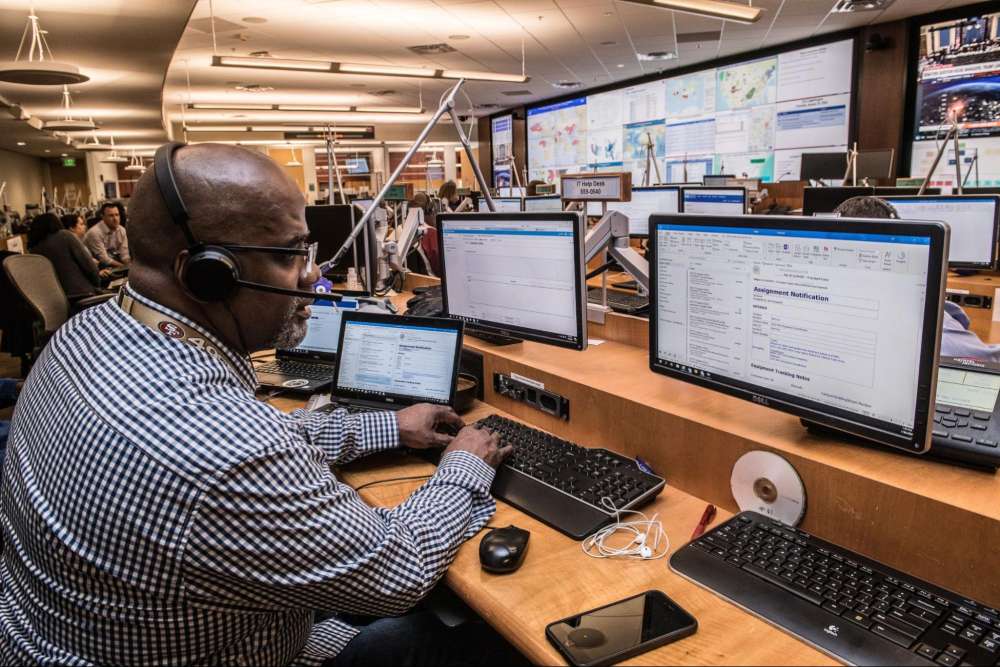
In today’s world, nearly 100% of organizations depend on technology for their day-to-day operations, from small and medium-sized businesses (SMBs) to large enterprises.
Of course, more moving parts mean more points of failure. That’s why IT support and help desk services are both critical tools in maintaining and improving your use of technology.
This begs the questions: Are there any major differences between IT help desk vs. IT support? And, if so, what are they?
In this article, we explore the difference between IT support vs. help desk services. Because every company is unique, understanding these differences will help you make an informed decision about which type of support aligns best with your needs. We’ll also discuss the helpdesk vs. service desk distinction.
IT Support vs. Help Desk: What is IT Support?
Also known as technical support, IT support is designed to resolve technical issues, generally at the organizational level. Therefore, a high level of expertise and experience is required, in addition to a wide range of accreditations and certifications.
Due to the increasing dependence on business technology, the need for comprehensive tech support has grown. As a result, many organizations are turning to managed service providers (MSPs) for help.
The combination of technical expertise and cost-efficiency offered by MSPs has made them a highly desirable option as compared to a traditional in-house support team.
Examples of managed tech support include:
- Cybersecurity
- Device management
- Mobility management
- Network management
- Disaster recovery (DR)
- Communication management
- IT infrastructure management
- Business continuity planning (BCP)
Another advantage of partnering with an MSP for your tech support is the 24/7/365 service delivery. Make sure to properly research a handful of MSPs before deciding which one is the best fit for your business.
IT Support vs. Help Desk: Which is Right for Your Business?
|
Help Desk vs. IT Support: What is an IT Help Desk?
By the late 1980’s technology had made massive strides, cementing its place in the culture. As more enterprises began using computers to execute core business activities, the help desk was born. Its purpose was to resolve everyday IT issues, a tactical solution that allowed for rapid remediation in an approach known as “break-fix”.
Though the types of IT problems have changed a lot since the 80’s, the idea has remained the same: dedicated support technicians help employees remediate individual hardware and software issues.
Today, this is typically conducted through a ticketing system that is used to manage incidents and service requests: A client submits a ticket detailing their incident or service request. A tech then reviews the ticket and provides appropriate support. Note that the difference between an incident and service request is that the former is more serious than the latter.
Alternatively, a ticketing platform may include a self-service knowledge portal. This provides documentation that allows clients to independently troubleshoot issues. Finally, help desk services are often accessible by phone, e-mail, and even in-person.
Help Desk Support Tiers
There are four common levels of help desk support. Though each level is designed to deal with IT issues and incidents, they do so with varying degrees of thoroughness.
Simple issues are resolved with low-tier support, while complex issues get escalated to higher tiers. In ascending order of complexity, they are:
- Tier 1
Also known as “first-touch resolution”, this support tier tackles the most basic issues within a short time frame. For instance, fixing a new employee’s email login.
- Tier 2
This tier provides more in-depth support than the previous tier. It combines troubleshooting with some preliminary root cause analysis (RCA).
- Tier 3
Complex IT incidents are escalated to Tier 3. These issues require extensive engineering support and a more rigorous RCA.
- Tier 4
If an issue fails to be resolved internally, it can be outsourced to a third-party support team, usually a vendor or cloud service provider.

The IT Support vs. Help Desk Difference
There are several specific qualities that differentiate IT support from help desk services, both in terms of functionality and responsibility; however, the two broad distinguishing characteristics are:
- Different Technical Objectives
The objective of an IT support specialist is to address global problems, while a help desk technician is trained to handle targeted incidents. As a result, IT support tends to require a deeper level of expertise or even a niche specialty.
Conversely, help desk technicians are equipped with expansive, general knowledge regarding IT issues. Their repertoire allows them to uncover what exactly the problem is, even when the client is uncertain or unclear about it.
Note that while a help desk may not always fix an issue outright, they do provide the necessary counsel and empathy to guide the client towards resolution. Think of them as primary care physicians who can direct you to the appropriate specialist.
- Different Customer Approach
As we’ve seen, IT support attacks large-scale organizational issues in a fast and competent manner. Thus, within an organization, support specialists often deal with managers, executives, or C-level staff.
In contrast, a help desk is a customer-facing service that attempts to remediate low-level incidents on an individual basis. This means that they have the opportunity to interact with any employee within a company.
A good help desk therefore provides a mix of technological expertise and high-quality customer service.
It’s worth noting help desk services are typically bundled into IT support packages, the former acting as a first point of contact for any IT issues that may arise.
IT Helpdesk vs. Service Desk: Is There a Difference?
You may sometimes hear a help desk synonymously referred to as a service desk. However, these services are actually quite distinct. While both address IT issues, they do so at different levels. For example:
- Help desks are tactical; service desks are strategic
- Help desks are reactive; service desks are proactive
- Help desks focus on individual issues; service desks focus on organizational issues
- Help desks use a break-fix approach; service desks prevent recurring issues and reduce risks related to organizational changes
Ultimately, a service desk focuses less on problem resolution and more on operational enhancement. The aim is to optimize business processes at the organizational level by improving technological efficiencies.
To accomplish this, a service desk manages incidents using a data-driven approach. This in turn creates a feedback loop that allows for continuous improvement. There are three pillars to any service desk, which are:
- Incident Management
An incident is defined as a single IT issue that happens to an individual. Incident management is therefore the practice of isolating, identifying, and alerting technicians to these incidents, with the goal of improving incident response.
- Problem Management
When the same incident continues to occur, that group of incidents becomes known as a “problem.” Hence, problem management is the process of isolating, identifying, and analyzing these problems. An RCA is conducted to pinpoint the underlying cause and the problem is then eliminated.
- Change Management
To eliminate a problem, a service desk may sometimes need to develop a new workflow. However, because implementing a novel workflow can induce cross-functional changes, the service desk must track and mitigate risks to assure a smooth transition. This is known as change management and is often associated with configuration management.
With so much to manage, the use of service desk software is essential. This software is known as an IT service management (ITSM) tool, a cloud-based solution that complies with ITIL best practices and includes a ticketing system.
Interested in learning more about IT support vs. help desk? Check out these blogs: |
AT-NET is Your Trusted IT Support and Help Desk Solution Provider
Now that you have a clear understanding of the many differences between a help desk vs. IT support, you’re better equipped to decide which one is best for your business.
It’s important to note, however, that many organizations will alternatively require both IT support and help desk services at various times.
If you’re looking to streamline your workflows, improve operational efficiency, and gain a competitive advantage in your industry, then consider partnering with a skilled MSP.
As a leading provider of IT helpdesk and support services for over 23 years, AT-NET offers rapid support that is backed by an average response time of less than 60 seconds. This ensures we’re always there to assist when you need us most.
For more information about our IT helpdesk and support services, contact us today to request your unique services proposal.
Just so you know about AT-NET Services…
The Best MSP Professionals and Cybersecurity Professionals
Flat Fee IT Service, HIPAA, PCI, SEC, FINRA Services, Business Risk Management Services, IT Project Management, Managed IT Services, Co-Managed IT Services, Cloud Solutions, VoIP Solutions, IT Helpdesk, Workstation Support, Windows Server Support, Cybersecurity Solutions, Vulnerability Management, Network Infrastructure, Email Security, Data Backup & Recovery, Phishing Simulation, Security Awareness Training, Security Risk Assessments, Microsoft 365, Security Cameras, Integrated Door Access, and Structured Cabling

